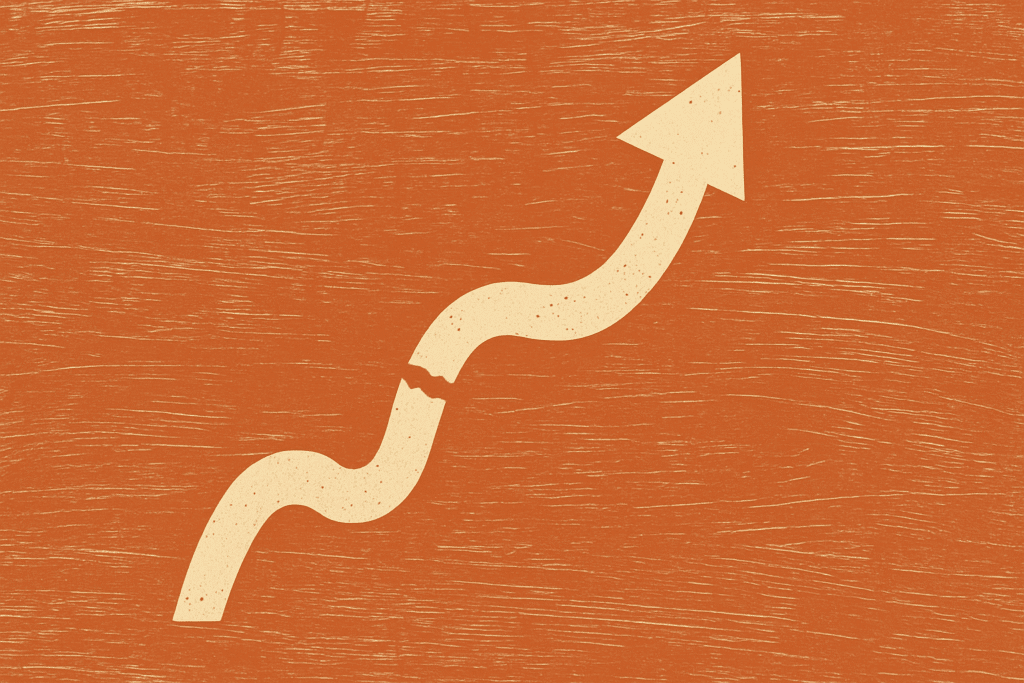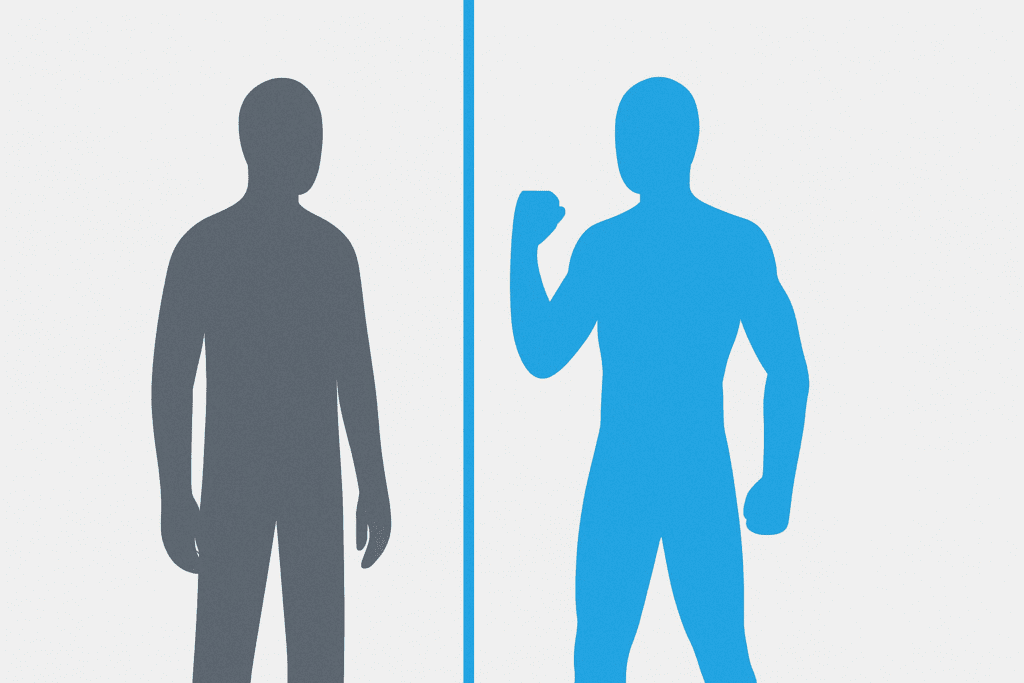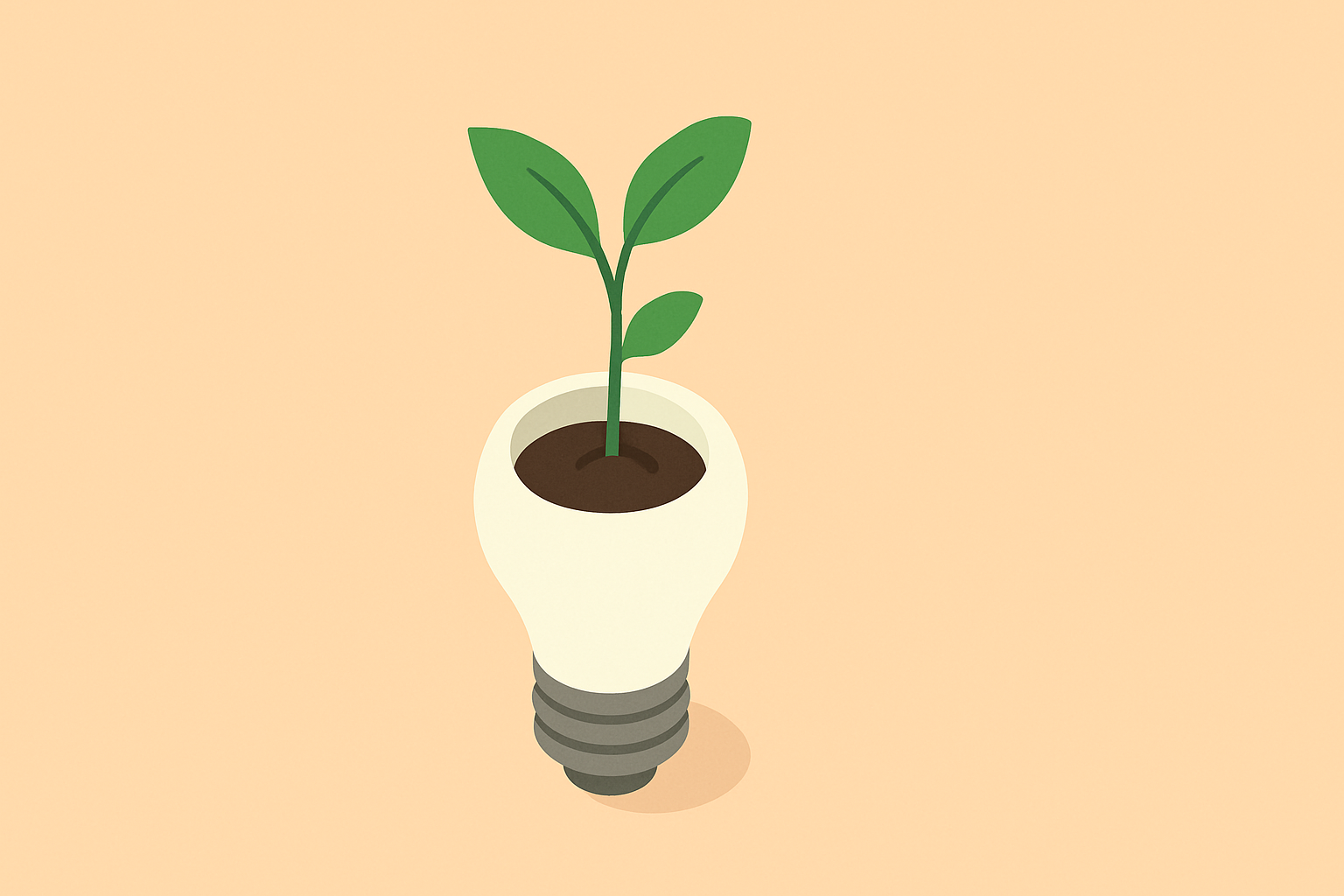Introduction

Your Resolutions Are Designed to Fail — Here’s the Truth
Every January 1st, billions of people make a sacred promise:
“This year, I’ll change.”
“This year, I’ll become unstoppable.”
Gym memberships skyrocket. Journals are filled with grand goals. Motivation peaks.
And yet — by February, over 90% have already quit.
Not slowed down. Not struggling.
Completely given up.
It’s not because you’re weak.
It’s not because you lack discipline.
It’s because the very system you’re using — the “New Year’s Resolution mindset” — is rigged against you.
Behavioral science has uncovered something brutal:
Your brain is designed to resist change unless you hack it the right way.
Every failed resolution isn’t just a broken promise —
It’s a perfect example of how motivation fades faster than you think, habits aren’t built overnight, and willpower alone is a myth.
If you’ve ever felt frustrated, defeated, or ashamed by how fast your motivation dies out — you’re not broken.
You’re just following the wrong rules.
In this blog, you’ll learn why most resolutions fail (straight from behavioral science) — and exactly how to beat the system.
No fluff.
No clichés.
Just the raw, research-backed truth that can actually change your year — and your life.
Let’s dive deeper.
Why Motivation Dies After January
At the start of the year, motivation feels endless.
You’re energized, excited, and ready to change your life.
But what you’re actually experiencing isn’t real discipline — it’s a temporary dopamine spike.
Behavioral scientists call this the “Fresh Start Effect.”
When we hit symbolic dates (like New Year’s), our brain tricks us into believing we’re starting fresh, with endless willpower.
It feels real… until reality punches back.
Here’s why motivation crashes hard after a few weeks:
- Motivation is emotional, not structural: Feelings fade. Systems sustain.
- The brain overestimates short-term ability: You feel capable today, but tomorrow’s tired, stressed version of you wasn’t factored in.
- Dopamine needs constant novelty: Your brain craves newness. After a few workouts or journal entries, the “high” dies, and habits feel boring.
- No built-in feedback loop: If your resolution isn’t producing quick wins, the brain labels it “not worth the effort” and quits.
🔎 Behavioural Science Insight:
A 2020 study published in Nature Communications found that habit formation relies heavily on reward prediction.
If early efforts don’t reward you emotionally, your brain disengages.
Bottom Line:
Motivation is a chemical trick, not a strategy.
If you don’t replace it with systems, identity shifts, and environmental design, you’re guaranteed to crash.
Why Most Goals Are Set Up to Fail

It’s not that your dreams are too big.
It’s that your goals are built wrong from the start.
Most New Year’s resolutions are vague wishes dressed up as serious plans:
“I’ll get fit.”
“I’ll be more productive.”
“I’ll save more money.”
The problem?
Your brain hates uncertainty.
It craves specific targets, clear triggers, and tiny wins. Without them, it panics, procrastinates, and shuts down.
Here’s where most people go wrong:
- Goals are based on outcomes, not behaviors: Saying “I’ll lose 10kg” means nothing if you don’t anchor it to daily habits.
- No clear system for action: You’re relying on memory and willpower instead of environment and cues.
- Expecting instant results: Resolutions are seen as a sprint, not a marathon. When quick results don’t come, people assume it’s “not working.”
- Emotion-driven goal setting: Goals are created during a high-motivation emotional surge, but reality demands consistency, not hype.
🔎 Behavioral Science Insight:
Studies in The Journal of Behavior Therapy and Experimental Psychiatry reveal that implementation intentions (specific “if-then” plans) increase success rates dramatically.
Example:
“If it’s 6 PM, then I’ll lace up my running shoes and jog for 20 minutes.”
This triggers automatic action instead of leaving it up to mood.
Bottom Line:
Hope is not a strategy.
If your goals aren’t visible, measurable, and tied to behavior, they’re doomed from the first day.
The Myth of Willpower — And Why You Run Out of It
Willpower sounds noble.
It’s romantic to believe that sheer grit will drag you across the finish line.
But science destroys that fantasy.
Willpower is not infinite.
It’s a limited resource, like the battery on your phone.
And every decision, every temptation resisted, every tiny act of self-control drains it.
Here’s how willpower actually works (and why you run out fast):
- Decision Fatigue: Every choice — even tiny ones like what to eat — burns a little mental fuel.
- Ego Depletion: Studies show that after resisting temptation (like skipping dessert), your brain is less able to resist the next challenge.
- Environment Attacks Willpower: If junk food is everywhere, or your phone keeps buzzing with distractions, your brain will lose the battle eventually.
🔎 Behavioural Science Insight:
Research from Baumeister et al. shows that willpower works like a muscle — it can get tired after overuse, but it can also be trained and strengthened over time.
However, in critical moments, smart design beats sheer effort.
Bottom Line:
Willpower is a backup generator, not a primary power source.
If your success plan relies on willpower alone, you’re setting yourself up to fail.
Better strategy?
Design your environment so that “the right choice” is the default, not a constant uphill battle.
The Brain’s Addiction to Immediate Rewards
Your brain has a fatal flaw:
It worships immediate rewards and underestimates future benefits.
That’s not laziness.
That’s evolution.
Thousands of years ago, humans needed to prioritize immediate survival:
Eat now. Rest now. Escape now.
Tomorrow wasn’t guaranteed.
Today, that same wiring sabotages your goals.
Here’s why you keep chasing the “easy now” instead of the “better later”:
- Dopamine loves immediacy: Every time you scroll, snack, or skip a workout for Netflix, your brain rewards you instantly.
- Delayed rewards feel abstract: “Lose 20 pounds in 6 months” doesn’t light up your brain today the way a donut does.
- Instant gratification wins the energy war: Your brain wants the highest pleasure for the lowest effort. Waiting feels like pain.
🔎 Behavioral Science Insight:
A famous study at Stanford (the Marshmallow Test) found that kids who could delay gratification had better life outcomes later.
But — and this matters — self-control wasn’t just about grit.
Kids who succeeded used strategies like distraction, imagination, and environment control.
Bottom Line:
If you want to win against your brain’s cravings, you can’t rely on “being strong.”
You need to re-engineer how rewards are structured.
Give yourself small wins daily.
Make the path to success feel rewarding immediately — not just six months later.
Why Identity-Based Habits Beat Goal-Based Habits

Goals scream:
“I want to achieve something!”
Identity whispers:
“This is just who I am.”
And identity always wins.
Most New Year’s resolutions die because they stay trapped at the surface level — outcome-focused:
- “I want to run a marathon.”
- “I want to lose weight.”
- “I want to read 50 books.”
But deep inside, your brain asks:
“Is this really me?”
If the answer is no, resistance builds until you quit.
Here’s the core difference:
- Goal-Based Thinking: “I want to run a marathon.” → You train only when you feel motivated.
- Identity-Based Thinking: “I am a runner.” → You train because that’s simply what runners do, motivation or not.
🔎 Behavioral Science Insight:
Research published in Personality and Social Psychology Bulletin shows that people are far more likely to stick to behaviors that align with their self-image than behaviors that feel foreign or forced.
Bottom Line:
Stop chasing outcomes.
Start embodying the kind of person who achieves those outcomes.
Don’t set a goal to read 50 books.
Become the person who reads daily, even if it’s 2 pages.
Don’t vow to “get fit.”
Become the person who never misses a workout, no matter how small.
Identity is sticky.
It survives motivation slumps.
It turns effort into second nature.
Actionable Micro-Habits That Actually Stick

You’ve been lied to about habits.
The self-help industry screams: “Just wake up at 5 AM! Just grind harder! Just want it enough!”
But here’s the truth—
Most habits fail because they’re too big, too vague, and too disconnected from your brain’s wiring.
You don’t need more motivation.
You need micro-habits—tiny, ruthless, neuroscience-backed actions that bypass resistance and rewire your identity on autopilot.
Let’s fix that.
1. The 2-Minute Rule: How to Trick Your Brain Into Starting
Your brain resists change like a stubborn toddler. But it can’t resist something laughably easy.
The Fix:
- “Work out” → “Put on workout clothes.”
- “Write a book” → “Open a blank document.”
- “Meditate daily” → “Sit on the floor for 60 seconds.”
Why It Works:
- A study in Health Psychology found that people who just showed up to the gym (even if they left after 5 minutes) were 3x more likely to build a long-term habit.
- Starting is the hardest part. Once you’re in motion, momentum takes over.
Pro Tip: Pair it with a trigger. Example: “After I brush my teeth, I’ll put on running shoes.”
2. The “Paper Clip Strategy”: Visual Progress = Dopamine Fuel
Your brain craves proof of progress. No visible wins? It quits.
The Fix:
- Move a paper clip from one jar to another every time you complete a micro-habit.
- Cross off days on a calendar with a red X (Jerry Seinfeld’s “Don’t Break the Chain” method).
- Use a habit tracker app like Streaks or Habitica.
Why It Works:
- Visual triggers activate the striatum, the brain’s reward center, releasing dopamine.
- A 2016 study in JAMA Internal Medicine found that tracking progress doubled adherence to health goals.
Pro Tip: Start with one habit. Tracking 10 at once is a guaranteed crash.
3. The “Implementation Intention” Hack (3x More Effective Than Willpower)
Vague plans = vague results. Your brain needs a when, where, and how.
The Fix:
- Bad: “I’ll read more.”
- Good: “At 8 PM, I’ll sit on the couch and read one page of my book.”
Why It Works:
- A meta-analysis in Psychological Bulletin found that specific “if-then” plans increase success rates by *200-300%*.
- Your brain runs on autopilot when given clear cues.
Pro Tip: Stack habits onto existing routines. Example: “After I pour my coffee, I’ll write one sentence in my journal.”
4. The “Minimum Viable Effort” Rule (How to Never Miss a Day)
Miss one day? Your brain whispers: “Might as well quit.”
The Fix:
- Define your absolute lowest-effort version of the habit:
- “Work out” → “Do 2 push-ups.”
- “Meditate” → “Take 3 deep breaths.”
- “Write” → “Type one sentence.”
Why It Works:
- Research in European Journal of Social Psychology shows consistency (not intensity) builds identity.
- Even a 30-second action keeps the chain intact and reinforces “I’m the kind of person who does this.”
Pro Tip: 90% of the time, you’ll do more than the minimum. But on bad days, the bare minimum still wins.
5. The “Pre-Commitment” Nuclear Option (Lock Yourself In)
Willpower fails. Forced choices don’t.
The Fix:
- Schedule workouts with a friend (no-show = guilt).
- Pay for a year-long gym membership upfront (sunk cost = pain).
- Use apps like StickK to bet money on your success (loss aversion = fuel).
Why It Works:
- A Harvard study found that pre-commitment devices increase goal adherence by up to 300%.
- Your brain hates losing money, disappointing others, or breaking promises more than it hates effort.
Pro Tip: Make the wrong choice harder. Delete apps, freeze junk food in ice, or leave your phone in another room.
6. The “Identity Reinforcement” Trick (Become Unstoppable)
Goals demand effort. Identity demands nothing—because it’s who you are.
The Fix:
- After every micro-habit, whisper: “I’m the kind of person who ______.”
- “I’m the kind of person who never misses a workout.”
- “I’m the kind of person who reads daily.”
Why It Works:
- Cognitive dissonance forces your brain to align actions with self-image.
- A study in Journal of Personality and Social Psychology found that identity-based habits are 8x more likely to stick than outcome-based ones.
Pro Tip: Start small. “I’m the kind of person who flosses one tooth” still counts.
Final Truth: Habits Aren’t Built—They’re Sculpted
You don’t build a habit like a house.
You sculpt it like a statue—chipping away resistance, one tiny action at a time.
Forget motivation.
Forget willpower.
Focus on systems so small they feel stupid… until they change everything.
Now pick one micro-habit.
Start today.
Repeat until it’s who you are.
The Dark Psychology of Fallback (And How to Bounce Back Stronger)
You think failure happens when you stop making progress.
But here’s the brutal truth:
Relapse happens long before you actually quit.
It starts with a whisper—
“I’ll just skip today.”
“One cheat meal won’t hurt.”
“I’ll start again tomorrow.”
Then, shame creeps in.
The brain weaponizes it:
“You failed. You’re weak. Why bother?”
And just like that—another resolution dies.
But what if relapse isn’t failure?
What if it’s data—a clue to rewire your system for good?
Let’s break the cycle.
1. The “3-Day Rule”: Why Most Habits Die by Day 4
Research shows 40% of New Year’s resolutions fail by January 31st.
But the real drop-off? Day 3-4.
Why?
- The dopamine rush of “Day 1” fades.
- Reality hits: This takes effort.
- No immediate rewards = brain files habit under “not worth it.”
The Fix:
- Treat Days 3-4 like a boss battle. Expect resistance.
- Schedule a “reward hit” (e.g., watch a favorite show after the workout).
- Shrink the habit further: “Just show up. Do 10 seconds. Leave if you want.”
Science Backs It:
A European Journal of Social Psychology study found that surviving the first week increases long-term success by 600%.
2. The “Zero Exception Policy” Myth (Why It Backfires)
Most gurus preach: “Never miss a day!”
But here’s the problem—
Perfectionism is a trap.
The moment you slip, your brain screams:
“You blew it! Might as well quit!”
The Fix:
- Adopt the “80% Rule”: Aim for consistency, not perfection.
- Rebound faster: Miss a day? The next action is non-negotiable.
- Reframe relapse: “This is part of the process. Now I learn.”
Pro Tip: Track streaks, but celebrate “restarts” more than “perfect runs.”
3. The “Addiction Loop” of Bad Habits (And How to Hack It)
Relapse isn’t laziness—it’s neurological hijacking.
Bad habits follow a Cue → Craving → Response → Reward loop.
Example:
- Cue: Stress.
- Craving: Distraction.
- Response: Scroll Instagram.
- Reward: Dopamine hit.
The Fix:
- Keep the Cue + Reward, replace the Response:
- Stressed? *Do 5 push-ups → then scroll.*
- Craving sugar? Eat an apple → then a square of dark chocolate.
- Disrupt the loop: Delete apps, use grayscale mode, or set 10-minute delays.
Harvard Research:
Habit replacement is 9x more effective than sheer willpower (Annals of Behavioural Medicine).
4. The “Identity Shield”: How to Make Relapse Impossible
Relapse preys on temporary identity.
Example:
- “I’m trying to eat healthy” → “One burger won’t matter.”
But when your habit is who you are?
- “I’m a healthy eater” → “Burgers aren’t my thing.”
The Fix:
- Language matters: Stop saying “I’m trying”. Start saying “I don’t” (e.g., “I don’t skip workouts.”).
- Collect evidence: Keep a “proof log” (e.g., “Workout done: Day 17”).
Stanford Study:
Self-affirmation strengthens the prefrontal cortex, reducing relapse by 50% (Journal of Personality).
5. The “Relapse Autopsy” (Turn Failure into Fuel)
Most people ignore slip-ups. Winners dissect them.
Ask:
- What triggered the relapse? (Stress? Boredom? Social pressure?)
- What could I do differently next time? (e.g., Prep healthy snacks when tired.)
- What’s the smallest next step? (e.g., “Drink a glass of water now.”)
Pro Tip: Write this down. Relapse patterns become obvious after 3-4 autopsies.
Final Truth: Relapse Isn’t Your Enemy—Your Response Is
The difference between winners and quitters?
Winners relapse forward.
They don’t wait for “Day 1” to restart.
They choose now—even if “now” is 3 AM and they’re eating ice cream straight from the tub.
Remember:
- One step back? Take two forward.
- Shame fuels relapse. Curiosity kills it.
- The best habit system is the one you restart the fastest.
Conclusion
Forget grand promises. Forget “new year, new me.”
The only resolution that matters is this:
“I will show up imperfectly until ‘trying’ becomes ‘being.'”
Because real change isn’t about:
- Perfect streaks.
- Hustle porn.
- 30-day miracles.
It’s about micro-actions, repeated until they rewrite your identity.
You now have the science.
You have the systems.
The rest?
Just start.
Stumble.
Restart.
Until one day—without fanfare—you realize:
The habit owns you.
Must-Read Books to Hack Your Habits (Backed by Science)
1. Atomic Habits by James Clear
Why You Need It:
- The bible of habit science.
- Teaches you how to build habits so small they’re laughable… until they change everything.
- Best for: Anyone who’s ever failed at a New Year’s resolution (so, everyone).
2. The Power of Habit by Charles Duhigg
Why You Need It:
- Explains the neurological loop behind every habit (cue → routine → reward).
- Packed with insane case studies (how Target knows you’re pregnant before you do, why some people can’t quit smoking, etc.).
- Best for: People who want to reverse-engineer bad habits and replace them.
3. Tiny Habits by BJ Fogg
Why You Need It:
- Written by a Stanford behavior scientist.
- Proves why emotion (not repetition) is the secret to habit formation.
- Best for: Overthinkers who want a simple, research-backed method.
4. The 5 Second Rule by Mel Robbins
Why You Need It:
- Teaches you how to hijack hesitation before your brain sabotages you.
- The rule? *If you have an impulse to act, count 5-4-3-2-1 and MOVE.*
- Best for: Chronic procrastinators and people who know what to do but can’t start.
5. Mindset by Carol Dweck
Why You Need It:
- Explains why talent is overrated and growth mindset is the real key to success.
- Will make you excited to fail (because failure = data, not identity).
- Best for: Anyone who’s ever thought “I’m just not good at this.”
Why These Books?
I’ve handpicked these not because they’re popular, but because:
✅ Science-backed (no fluff).
✅ Battle-tested (real people, real results).
✅ Actionable (you’ll finish them and immediately know what to do).
Pro Tip: Start with one. Read it twice. Take notes. Then implement like hell.
FAQ’s
I’ve failed at habits before. Why will this time be different?
Because you’re not relying on motivation anymore. Science proves habits are built through systems, not willpower. The micro-habits in this blog are designed to bypass resistance—so small they’re almost impossible to fail. Start tiny, win often, and let momentum do the heavy lifting.
How long until a habit sticks?
Forget the “21-day myth.” Research from University College London shows it takes 18 to 254 days, depending on complexity. But here’s the key: The first 2 weeks are critical. Survive that, and your odds skyrocket. Focus on consistency, not speed.
What if I miss a day?
Missing a day doesn’t break a habit—skipping the next one does. Relapse is part of the process. Follow the “2-Day Rule”: Never let two days pass without action. Example: Skip Monday? Tuesday is non-negotiable
How do I handle cravings for bad habits?
Hack the “10-Minute Rule”: When a craving hits, wait 10 minutes. Distract yourself (walk, chug water, call a friend). Most urges dissolve in that window. Stanford research found this reduces impulsive actions by 50%+.
Can I build multiple habits at once?
No. Focus on one keystone habit (e.g., exercise, sleep, or meditation) for 30 days. Why? Willpower is finite. Mastering one habit trains your brain’s “discipline muscle,” making future habits easier.
What’s the fastest way to make a habit automatic?
Use “habit stacking”: Pair a new habit with an existing one. Example:
After I brush my teeth → I’ll floss one tooth.
After I pour coffee → I’ll write one sentence.
This piggybacks on neural pathways you already have.*
How do I stay motivated when results take time?
Track inputs, not outcomes. Example:
Don’t measure weight loss; track workouts completed.
Don’t fixate on salary; count skills learned.
Small wins release dopamine, fuelling persistence.
What’s the #1 mistake people make?
Going too big, too fast. Motivation fades, but systems endure. If your habit feels hard, shrink it. “Read 30 minutes” fails? Try “read one paragraph.” Consistency > intensity.
